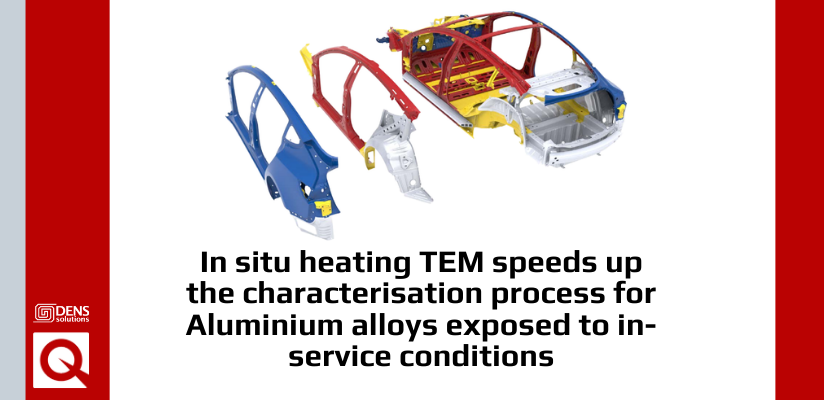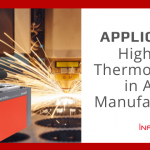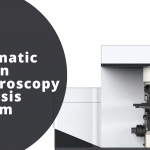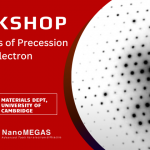

Original article by Jonas Kristoffer Sunde, Sigurd Wenner and Randi Holmestad
Aluminium alloys are versatile lightweight materials exhibiting high strength that will have an increasingly more important role to play in the development of sustainable transportation alternatives, such as in automobiles. Put simply, if you have a lighter car, you need less energy to move it forward. This leads to improvements in fuel economy and reduced-emissions, or one can travel further with a single battery charge.
Aluminium is the fastest growing material for automotive applications as compared to other competing materials, which is driven by stricter regulations and demands to cut carbon dioxide emissions.
Compared to steels, aluminium alloys are much less heat resistant. This becomes an issue when placing components made of aluminium in proximity of sources of heat, such as internal combustion engines or near the battery pack of electric vehicles. If given sufficient amounts of time, the microstructure – and hence properties – of an aluminium alloy will change if exposed to elevated temperatures, say 50-90 °C, which are temperatures that are reached near working car components. Therefore, replacing steel components with lighter aluminium alloy substitutes means that we need to have a fundamental understanding of the behaviour of aluminium alloys under in-service conditions. Additionally, the process of material-joining might entail welding, causing thermal spikes that could reach 300 °C and the formation of heat-affected zones in adjacent materials, which has a large effect on the structural integrity of joint materials.
In situ TEM heating
It is in the understanding of these effects that in situ TEM heating will play a crucial role. Conventionally, samples are heated ex situ to different stages and subsequently inspected one by one in the TEM. However, now Sunde et al. were able to directly observe the microstructural changes occurring on the nm-scale for an Al-Mg-Si-Cu alloy inside the TEM, as it was heated in the range 180 – 240 °C, enabled by the DENSsolutions Wildfire system.
6xxx series aluminium alloys
There are several different classes of aluminium alloys. The main groups of high-strength, heat-treatable alloys are the 2xxx (Al-Cu), 6xxx (Al-Mg-Si) and 7xxx (Al-Zn) series. Of these, the 6xxx series have proved most promising for future use in certain car components due to their general ease of extrusion and welding as compared to most 2xxx and 7xxx series alloys.
Previous in situ heating TEM studies have been conducted on 2xxx type alloys. The 2xxx series alloys lend themselves very well for visualisation in annular dark-field (ADF) STEM mode, due to the increased atomic column scattering power to higher angles for Cu as compared to lighter elements such as Al, Mg and Si. ADF-STEM mode imaging is less suitable for 6xxx series alloys, where the Cu content is usually very low compared to 2xxx series alloys. This requires different TEM techniques for tracking the character of forming phases.
To solve this problem, in a previous study, Sunde et al. developed a characterisation technique using scanning precession electron diffraction (SPED) and machine learning with which one can track the character of individual precipitates acquired from a larger 2D scan area. Here, this approach was combined with in situ heating, which enabled the researchers to track the phase transformation occurring for many precipitates in a single region of interest after exposure to different stages of heating.
Evolving phases


Fig.1. (A) TEM image of the FIB prepared lamella. Insert shows a SEM image of the ion-milled lamella mounted across the heating holder SiN window using a C-weld. (B) A schematic of the heat treatment procedure.


Fig. 2. (A–C) Phase maps constructed from SPED scan decomposition results. The inserts show decomposition component patterns matched with indicated phases.
For this in situ heating study, a FIB lamella of a [001]Al oriented grain was prepared and mounted on a DENSsolutions nanochip. Before this, the specimen was heat-treated ex situ to initiate the precipitation in bulk conditions. Bright-field TEM imaging was used to track the precipitate growth after different stages of heating, and the character of individual precipitates was determined by SPED, performed with a step size of 1.52 nm and a pixel exposure time of 40 ms.
The SPED datasets were analysed and resulted into phase maps which allow one to distinguish respectively ꞵ’’, L and ꞵ’/Q’ phases. It was shown that a few % of initial ꞵ’’ phases transformed into ꞵ’/Q’ phases with heating. The structure of L phases did not change, and the phase exhibited a large thermal stability, with most phases remaining after multiple stages of high temperature heating. This latter finding has very interesting implications, as it might be possible to develop alloy compositions and heat treatment procedures which optimise for L phase precipitates, and which could hence yield large improvements in the thermal resistance of the alloy.
Future research
As can be seen in figure 1 A, bright-field images were acquired from two areas in the specimen. The studied region can be seen in figure 3 C-I and the second imaged region can be seen in figure 3 J. To the researchers’ surprise, the second region (fig. 3 J) shows a very dense microstructure of precipitates compared to the sparsely populated region at the same heating stage (fig. 3 I). The material thickness is slightly different, 130 nm compared to 90 nm. The question now is, what created this difference? This must be better understood in order to increase transferability to bulk precipitation behaviour.
Fig 3. (C–I) Bright-field images acquired at indicated times (tx) in the region highlighted in image (A) (∼90 nm thickness). White and yellow arrows indicate L and (β’’/)β’/Q’ phases, respectively, that remain in the studied region after all stages of heating. The white dashed oval highlights coarsened precipitates that have formed on an underlying dislocation, and acts as a point of reference between images. (J) Bright-field image acquired in the indicated region of image (A) (∼130 nm thickness).


“Our research group has been studying the needles of the Al-Mg-Si(-Cu) system for a very long time. Now that we are able to watch them grow and transform inside our microscopes, thanks to the DENSsolutions heating system, we can put our ideas to the test, and build bridges across current gaps in our knowledge. Exciting discoveries lie ahead!”
PhD candidate. Jonas Kristoffer Sunde – Department of Physics, Norwegian University of Science and Technology (NTNU)
Learn more about the Wildfire system and Nano-Chip: WILDFIRE PRODUCT PAGE
Discover more publications made possible by the DENSsolution Climate system: PUBLICATIONS
Read the original article: ORIGINAL ARTICLE






